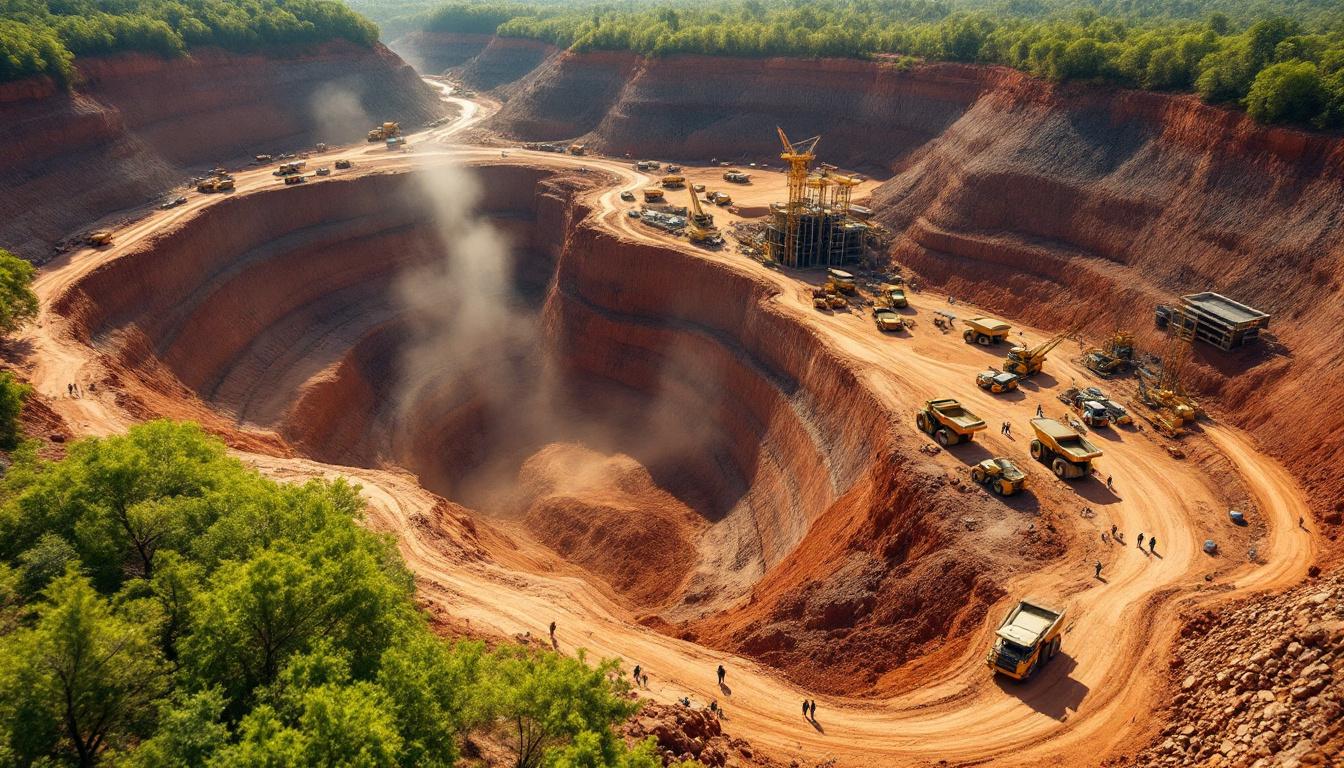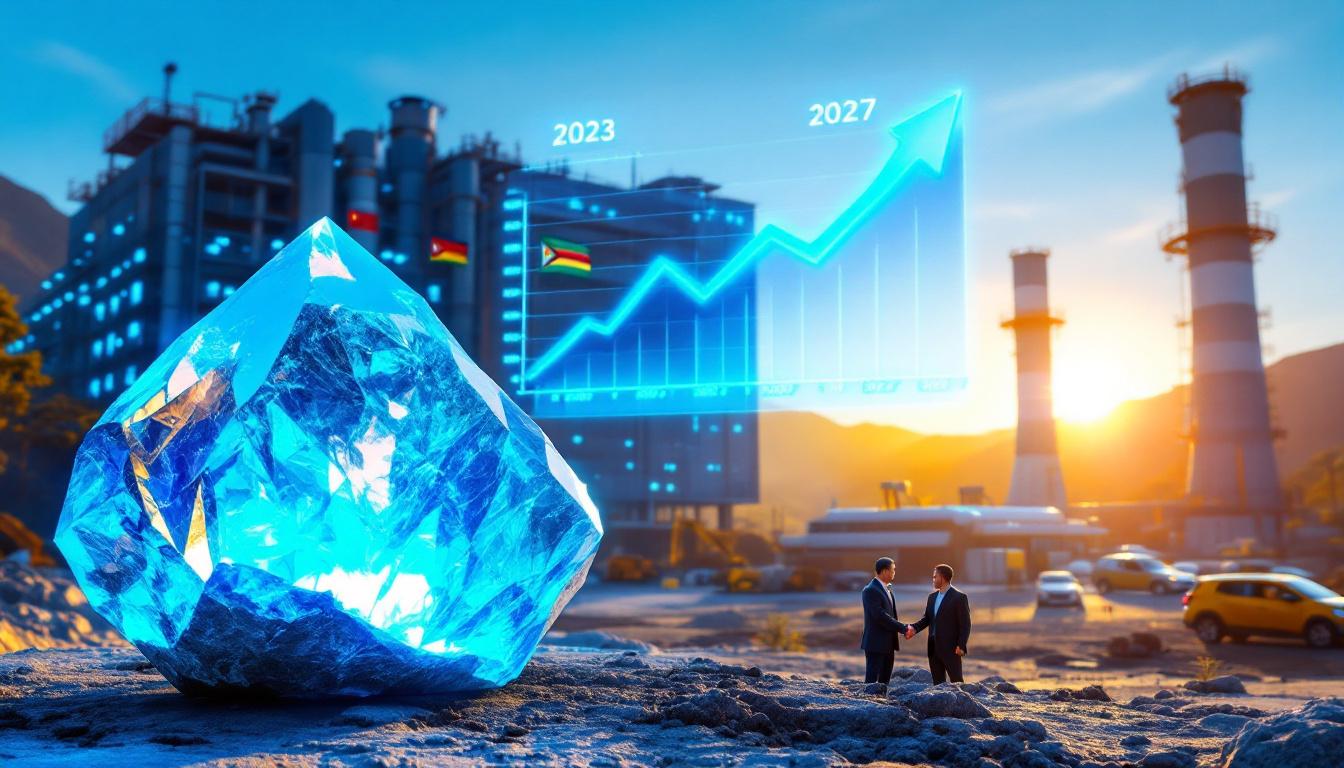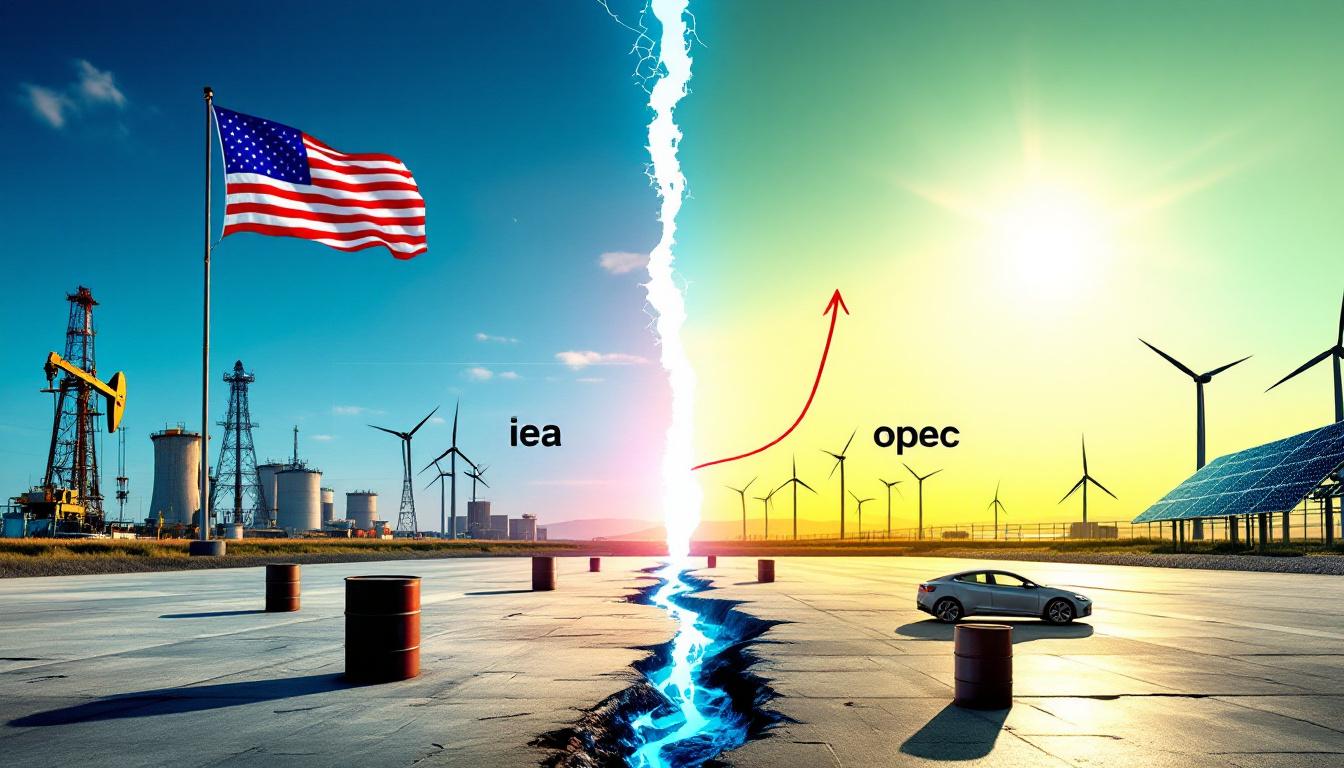Rio Tinto's Iron Ore Shipments Miss Expectations While Copper Outlook Brightens
Rio Tinto, the world's largest iron ore producer, reported mixed results for the second quarter of 2025, with iron ore shipments falling below analyst expectations while copper production forecasts improved. The mining giant continues to navigate operational challenges while positioning itself for future growth in key commodities.
How Did Rio Tinto's Iron Ore Shipments Perform in Q2 2025?
Shipment Volumes Below Analyst Expectations
Rio Tinto's Q2 iron ore shipments reached 79.9 million metric tonnes (Mt) from its Pilbara operations, representing a 13% increase from Q1 2025 shipments. Despite this quarterly improvement, the figure fell short of analyst consensus estimates of 81.98 Mt compiled by Visible Alpha.
The recovery continues after tropical cyclone disruptions in Q1, which significantly impacted production facilities across Western Australia's Pilbara region. According to meteorological records, the region experienced three Category 3+ cyclones during the first quarter, the highest frequency in over a decade.
"The cyclone season in early 2025 created unprecedented operational challenges across our Pilbara network, affecting both mining operations and rail transport infrastructure," noted Rio Tinto's operations report, explaining the slower-than-expected recovery trajectory.
Product Quality Composition Shifts
A notable development in Q2 was that lower-quality SP10 iron ore accounted for 29% of total Pilbara shipments, up from 23% in the previous quarter. SP10 is Rio Tinto's designation for iron ore products containing higher silica and aluminum content, typically selling at a $10-15 per tonne discount to premium products.
This shift indicates a strategic realignment in product mix compared to previous quarters, where premium products dominated the shipment profile. Industry analysts suggest this adjustment might reflect:
- Shifting geological conditions in active mining areas
- Strategic decisions to maximize overall production volume
- Response to changing Chinese steel mill demand patterns
- Optimization of fleet and processing capabilities
Annual Guidance Maintained but Conservative
Rio Tinto has reaffirmed its full-year iron ore shipment forecast at the lower end of the 323-338 Mt range, suggesting continued operational caution for the remainder of 2025. This conservative stance reflects ongoing challenges that could impact iron ore price trends and production capacity throughout the industry.
- Ongoing challenges in maximizing production capacity
- Potential weather disruptions in the second half
- Rail network optimization issues
- Labor constraints in Western Australia's tight mining labor market
Mining engineer Dr. Sarah Collins from Curtin University explains: "The Pilbara operations face a complex interplay of factors beyond weather events. Equipment utilization rates, maintenance cycles, and the sequencing of mining phases all contribute to production variability."
Why is Rio Tinto's Copper Outlook Improving?
Copper Production Trending Toward Upper Guidance
In contrast to iron ore's challenges, Rio Tinto forecasts full-year copper production at the higher end of its 650,000-700,000 tonne guidance range. This represents a significant improvement from the 620,000 tonnes produced in 2024.
Furthermore, unit costs are expected to trend toward the lower end of the $1.40-$1.60 per pound guidance, enhancing potential profit margins. This dual improvement in both production volume and cost efficiency signals a strengthening copper segment within Rio Tinto's portfolio, supporting positive copper price insights for the market.
Oyu Tolgoi Driving Copper Growth
The primary driver behind this improved outlook is the continued successful Oyu Tolgoi ramp-up in Mongolia's South Gobi region. This world-class copper-gold project represents one of the mining industry's most complex underground development challenges.
Key technical aspects of Oyu Tolgoi's development include:
- Implementation of block cave mining techniques at depths exceeding 1,300 meters
- Automation of key underground operations, including autonomous haulage systems
- State-of-the-art ore processing with 92.5% copper recovery rates
- Water recycling systems recovering 87% of process water in the arid Gobi environment
The mine's strategic importance is increasing as global copper demand rises, particularly driven by:
- Renewable energy infrastructure (wind, solar, grid systems)
- Electric vehicle manufacturing (EVs require 4x more copper than conventional vehicles)
- Data center and AI infrastructure expansion
- Urbanization trends in developing economies
Market Implications for Copper Segment
The improved production outlook and lower costs could substantially boost segment profitability, especially given copper price movements above $11,000 per tonne in recent trading. This positions Rio Tinto to capitalize on strong copper market fundamentals driven by structural supply deficits predicted through 2030.
"Copper remains one of the most attractive commodities in the mining space due to its irreplaceable role in electrification and limited supply growth pipeline," notes commodities strategist Michael Chen of Global Resources Capital.
The company's execution of its copper growth strategy demonstrates strategic foresight, as the copper market is projected to face a 4.7 million tonne annual supply deficit by 2030 according to CRU Group analysis.
What Leadership Changes are Happening at Rio Tinto?
New CEO Appointment
Rio Tinto named Simon Trott as new CEO effective immediately, replacing Jakob Stausholm who unexpectedly announced his departure in May 2025 after serving approximately 4.5 years in the role.
Trott previously headed Rio Tinto's iron ore division, the company's most profitable segment, generating approximately 75% of company earnings in recent years. His appointment represents an internal promotion from a critical operational role.
Industry observers note Trott's technical background includes:
- Mining engineering credentials with specialization in large-scale operations
- Previous leadership in Rio Tinto's commercial and shipping divisions
- Experience navigating indigenous relations in Western Australia
- Implementation of autonomous haulage systems across Pilbara operations
Strategic Implications of Leadership Transition
The board has signaled a desire for organizational simplification, suggesting Trott's mandate includes streamlining the company's management structure and decision-making processes.
The appointment of the iron ore division head emphasizes the continued importance of this core business despite diversification efforts. This transition occurs during a period characterized by:
- Operational challenges in maximizing iron ore production
- Strategic repositioning toward future-facing commodities like copper and lithium
- Navigating indigenous heritage protection after the Juukan Gorge controversy
- Balancing shareholder returns with growth investments
Industry analysts are closely watching for potential strategic shifts under the new leadership, particularly regarding capital allocation between the mature iron ore business and growth opportunities in copper and critical minerals outlook.
How Does This Performance Compare to Market Expectations?
Mixed Results Against Analyst Forecasts
Rio Tinto's Q2 performance presents a contrasting picture against market expectations:
| Metric | Actual | Consensus | Variance |
|---|---|---|---|
| Iron Ore Shipments | 79.9 Mt | 81.98 Mt | -2.5% |
| Iron Ore Guidance | Lower end of 323-338 Mt | Mid-range | Negative |
| Copper Outlook | Higher end of guidance | Mid-range | Positive |
| Unit Cost Outlook | Lower end of guidance | Mid-range | Positive |
The copper outlook improvement represents a positive surprise relative to analyst expectations, partially offsetting disappointment in iron ore shipments.
Operational Recovery Assessment
The Q2 shipment improvement of 13% demonstrates partial recovery from cyclone impacts, though the pace is slower than many analysts projected. Several factors have contributed to this gradual recovery:
- Port stockpile depletion requiring replenishment
- Rail network congestion during restart operations
- Sequential restart of multiple processing facilities
- Labor availability constraints affecting maintenance schedules
This recovery trajectory suggests ongoing operational challenges in maximizing production, with full normalization likely extending into Q3.
Market Reaction Indicators
While the transcript doesn't provide specific market reaction data, commodity analysts note that the copper outlook improvement partially offsets iron ore disappointment in valuation models. The leadership transition adds an element of uncertainty for investors, though Trott's familiarity with core operations provides continuity.
The strategic direction under the new CEO becomes a key focus for market participants, with particular attention to:
- Capital allocation priorities between iron ore and copper
- Cost reduction initiatives amid inflationary pressures
- Portfolio optimization of non-core assets
- Shareholder return policies including dividend trajectory
What are the Implications for Rio Tinto's Business Strategy?
Balancing Iron Ore Dependence with Diversification
Despite production challenges, iron ore remains Rio Tinto's core business, generating approximately 75% of earnings. However, the copper segment improvement demonstrates tangible progress in diversification efforts, creating strategic tension between maximizing returns from the mature iron ore business while investing in growth opportunities.
Rio Tinto's strategic positioning incorporates evolving mining industry trends including:
- Leveraging iron ore's exceptional cash generation capabilities
- Expanding copper production through brownfield expansions
- Exploring lithium and other battery material opportunities
- Focusing on operational excellence across all commodities
Production Quality Considerations
The increased shipments of lower-quality SP10 iron ore (29% of total) may reflect a strategic decision to optimize overall production volumes rather than focusing exclusively on premium products. According to metallurgical experts, the SP10 product contains:
- Higher silica content (typically 5-7% vs. 3-4% in premium products)
- Elevated alumina levels (2.5-3.5% vs. 1.5-2.0% in premium grades)
- Lower Fe content (58-60% vs. 62-63% in benchmark products)
- Similar phosphorus and sulfur impurity profiles
This shift could impact average realized prices and margins in upcoming financial results, potentially reducing price premiums by $3-5 per tonne across the portfolio.
Operational Resilience Focus
The recovery from cyclone disruptions demonstrates operational flexibility, though conservative guidance suggests continued caution about potential disruptions. This highlights the importance of building more weather-resistant operational capabilities, including:
- Enhanced port infrastructure with improved storm resistance
- Redundant power systems for critical infrastructure
- Advanced water management systems for both drought and flood scenarios
- Predictive maintenance systems to anticipate equipment failures
How Might These Results Affect Rio Tinto's Market Position?
Competitive Positioning in Iron Ore Market
Production volumes below expectations may slightly benefit competitors like BHP and Vale, potentially allowing them to gain incremental market share in premium product segments. Rio Tinto's maintained but conservative guidance signals a disciplined market approach focused on value over volume.
The product mix shift with more SP10 could impact premium product market share, particularly in high-specification steel markets in Japan and South Korea. Metallurgist Dr. Liu Wei of the Beijing Steel Research Institute notes: "The changing product profile from major miners like Rio Tinto has downstream implications for steelmakers' blending strategies and operational parameters."
Strengthening Copper Market Position
The improved copper outlook enhances Rio's position in a growing market characterized by structural supply constraints. The successful Oyu Tolgoi ramp-up represents a competitive advantage in bringing new large-scale production online in an industry struggling with declining ore grades and permitting challenges.
Lower unit costs improve competitiveness against major copper producers like Freeport-McMoRan and Codelco, many of whom are facing rising production costs due to:
- Declining ore grades (average global copper grade has fallen from 1.2% to 0.8% in 15 years)
- Deeper mining requirements
- Water scarcity in key production regions
- Increased environmental compliance costs
- Rising energy prices affecting processing economics
Strategic Positioning for Future Commodity Demand
Rio Tinto's balanced approach between iron ore cash generation and copper growth positions the company effectively for evolving market demands and energy transition. The company's portfolio now includes growing exposure to:
- Copper (electrification and renewable energy)
- Aluminum (lightweight materials for transportation)
- Lithium (battery technology)
- Titanium dioxide (lightweight, high-strength applications)
The new leadership under Simon Trott may further refine this strategic balance between commodities, particularly in capital allocation decisions between maintaining iron ore market share and accelerating growth in future-facing minerals.
What Factors Could Influence Rio Tinto's Performance in the Coming Quarters?
Operational Considerations
Several operational factors will influence Rio Tinto's performance through the remainder of 2025:
- Weather conditions in Pilbara region remain unpredictable, with meteorologists predicting above-average cyclone activity for the 2025-2026 season based on developing La Niña conditions
- Continued Oyu Tolgoi underground mine ramp-up progress, particularly the development of the higher-grade Hugo North Extension
- Ability to optimize product mix based on market conditions, potentially adjusting SP10 production volumes as price differentials evolve
- Maintenance scheduling at key processing hubs, with major shutdowns planned at two of seven processing plants in Q3
Market Dynamics
External market factors will also play a critical role:
- Iron ore price volatility and Chinese steel production trends, particularly as China's property sector continues structural adjustment and infrastructure stimulus evolves
- Copper demand growth from energy transition and infrastructure spending, with global renewable capacity additions expected to increase 15% year-over-year
- Potential impact of global economic conditions on commodity demand, with particular sensitivity to interest rate trajectories in major economies
- Exchange rate movements, especially the Australian dollar which affects cost competitiveness
Strategic Execution Under New Leadership
Simon Trott's priorities and organizational changes will significantly influence performance, including:
- Potential portfolio adjustments or capital allocation shifts
- Progress on organizational simplification highlighted by the board
- Management team restructuring and potential executive changes
- Implementation of technological initiatives including expanded autonomy and artificial intelligence applications
Commodities analyst Jessica Ramirez notes: "The transition period under new leadership typically brings strategic refinement rather than wholesale change at major miners like Rio Tinto, but the pace of operational improvement initiatives often accelerates."
FAQ: Key Questions About Rio Tinto's Performance
Why did Rio Tinto miss iron ore shipment estimates?
Rio Tinto shipped 79.9 million tonnes of iron ore in Q2 2025, below the analyst consensus of 81.98 Mt. While the company achieved a 13% increase from Q1 following tropical cyclone disruptions, the recovery pace was slower than expected, suggesting ongoing operational challenges in maximizing production capacity.
Contributing factors included maintenance backlogs accumulated during weather disruptions, rail network congestion during restart operations, and labor constraints in Western Australia's tight mining market. The company's focus on safe restoration of operations rather than accelerated recovery also contributed to the measured pace.
What is driving Rio Tinto's improved copper outlook?
The successful ramp-up of the Oyu Tolgoi underground mine in Mongolia is the key factor in Rio Tinto's improved copper outlook. This progress, combined with operational efficiencies, has positioned the company to achieve production at the higher end of guidance while keeping unit costs toward the lower end, enhancing the profitability potential of its copper segment.
Technical innovations in block cave mining techniques have accelerated the underground ramp-up, with automated systems improving both productivity and safety metrics. The mine's exceptionally high copper grades (averaging 1.8% Cu in active mining areas) contribute significantly to the favorable cost position.
How significant is the appointment of Simon Trott as CEO?
Simon Trott's appointment represents a strategic choice, bringing the leader of Rio Tinto's most profitable division (iron ore) to the CEO role. The board has indicated a desire for organizational simplification, suggesting Trott will focus on streamlining operations while balancing the company's core iron ore business with diversification efforts in copper and other minerals.
His appointment signals continuity in operational focus rather than dramatic strategic shifts, though his background in commercial operations suggests potential refinements in market approach and customer engagement strategies. The timing during operational challenges highlights the board's prioritization of execution excellence.
What does the increase in SP10 iron ore shipments indicate?
The increase in lower-quality SP10 iron ore to 29% of total Pilbara shipments suggests a strategic decision to optimize overall production volumes. This shift may impact average realized prices and margins in upcoming financial results, potentially reflecting adaptability to changing market conditions or operational constraints.
Metallurgically, the higher SP10 proportion indicates Rio Tinto is processing ore from geological zones with higher impurity levels, maximizing resource utilization rather than high-grading deposits. This approach supports longer-term resource sustainability but creates near-term quality profile adjustments that steelmakers must accommodate in their blending strategies.
Outlook for Rio Tinto Through 2025-2026
Production Trajectory Expectations
Iron ore production is likely to remain at the lower end of guidance through 2025
Ready to Stay Ahead of Major Mineral Discoveries?
Discover significant investment opportunities before the market with Discovery Alert's proprietary Discovery IQ model, delivering real-time alerts on ASX mineral discoveries and actionable insights. Visit our discoveries page to understand how major mineral discoveries have historically generated substantial returns.




